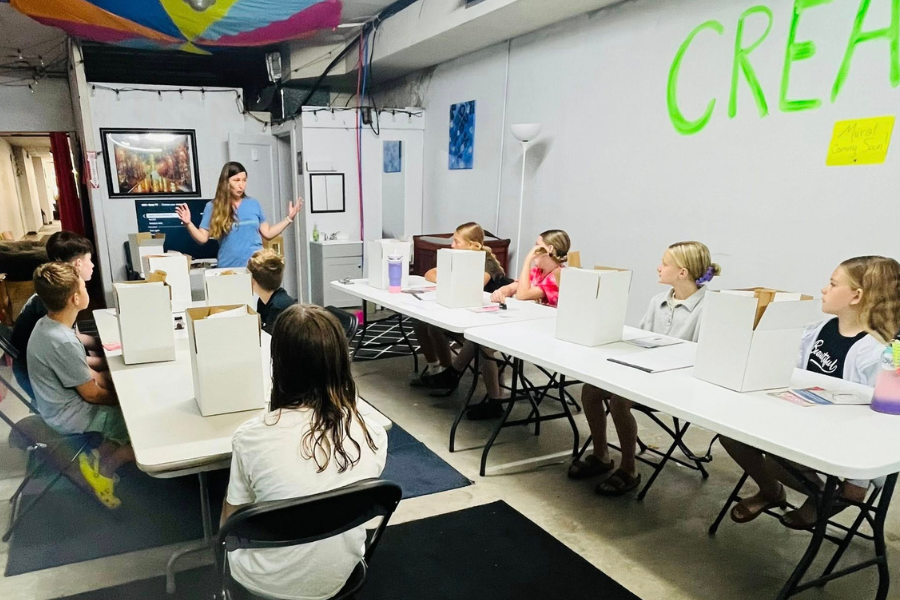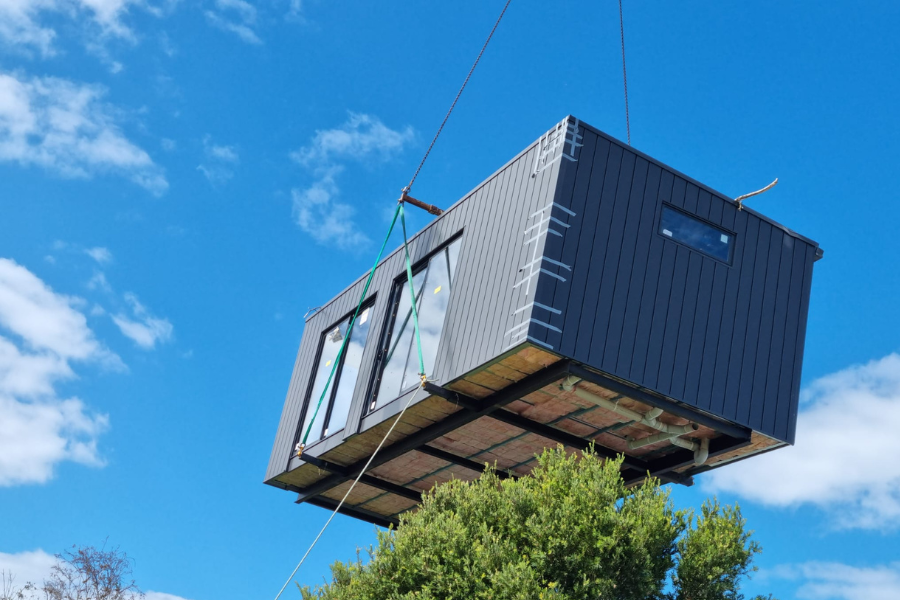Nov 19, 2024
How to Transform the Energy Efficiency Market: A Look at the Market Transformation Plans Guidance for Home Energy Rebates
Market transformation plans offer the opportunity for state energy offices to take a step back from implementation and consider where they want to see the most change.
By: Erin Cosgrove

The US Department of Energy (DOE) requires that states submit market transformation plans as part of the Home Energy Rebates program funding through the Inflation Reduction Act (IRA). The intent of these market transformation plans is to ensure that IRA Home Energy Rebates create lasting change in each state’s energy efficiency market. In September, DOE released guidance and sample plans, informally kicking off the process of drafting these plans for states across the nation. This blog will discuss what market transformation is and preview some examples from DOE that state energy offices and other stakeholders can use in developing their own plans.
What is Market Transformation?
The term “market transformation” has been around since the early 90’s but what it means is always evolving. This is because market transformation seeks to translate programs and initiatives into long-term change. One example that highlights successful market transformation efforts is the replacement of incandescent light bulbs with LED bulbs. As LEDs gained market share and became standard, energy efficiency program administrators have phased out lighting incentives for LED bulbs. This change did not happen overnight but was the result of different actors, policies, and programs that worked to help lower the costs of LED bulbs and increase their availability and adoption in the market.

For IRA Home Energy Rebates, DOE defined market transformation as programs that help transform the market by improving the value proposition of residential energy upgrades for consumers, contractors, suppliers, and capital investors. For energy efficiency programs, this can include initiatives to overcome barriers such as split incentives encountered in rental properties, strategic market interventions to properly value upgrades, or inclusion of new technologies that shift how utilities power the grid. These initiatives differ from current programs and IRA Home Energy Rebate programs because they look to achieve fundamental transformations that result in a change in the adoption of energy efficient products and services.
Potential Market Transformation Initiatives for IRA Home Energy Rebates
Market transformation plans offer the opportunity for state energy offices to take a step back from implementation and consider where they want to see the most change. DOE has outlined examples of what states could tackle with this funding, states are not tied to any of these examples and can choose to tackle one or many goals in their plans. Below is an overview of the potential market transformation efforts DOE outlined in their guidance.
Efforts To Transform the Housing Market
- Valuing Energy Efficiency in Real Estate Markets: Policies and programs that seek to show the value of energy upgrades to home buyers, renters, and real estate agents, and mortgage or loan providers. This can include programs such as the Vermont Home Energy Profile, which collects home energy usage through NEEP and ClearlyEnergy’s Energy Estimator Tool. In Montpelier, Vermont, Home Energy Labels are automatically populated into the MLS through HELIX. For states interested in enacting a similar program, DOE has released a sample plan for reference for this topic, and NEEP is available to provide insights into our work in this area.
- Educating Consumers on Residential Energy Efficiency: Programs that look to help homeowners and tenants understand broader benefits of energy efficiency upgrades through educational and outreach activities with stakeholders across the state. These programs can also include Home Energy Label’s, like the Energy Estimator Tool, as these tools can not only assess a home but also identify potential upgrades and future projects that can improve the home’s efficiency.
Efforts to Transform the Workforce
- Supporting Sustainable Business Models with an Aligned and Qualified Workforce: Policies and programs to help maintain and grow the energy efficiency workforce through creating business models and trainings, such as the Total Energy Pathways (TEP) program in Vermont, where contractors work to insulate, electrify, and add renewable energy to a home and the Total Building Performance Certificate, a certification and training program designed to prepare contractors with the holistic knowledge to plan, manage, and deliver whole-building retrofits. DOE has released a sample plan on supporting sustainable business models.
- Integrating Energy Efficiency Upgrades into Non-Energy Efficiency Focused Projects: Policies and programs to educate existing contractors on the benefits of efficiency upgrades and funding available. States can encourage contractors to offer these measures as part of their standard work or to team up with efficiency contractors (such as insulation contractors and siding companies) to tackle projects together.
- Establishing Attractive Financing for Workforce and Consumers: Policies that provide financial support to help customers and contractors who have to “float” the cost of equipment while waiting for reimbursements from rebates or other incentives. For many rebates programs, contractors or consumers must provide the initial upfront costs and wait for reimbursement of the funds, aka “floating the costs”. This objective would seek to find ways to provide financing to help carry or eliminate these costs.
Efforts to Transform State Policy
- Laying the Foundation for Virtual Power Plants: Policies that lay the groundwork for investment in virtual power plants (VPPs) to balance electricity supply and provide flexible grid resources as an alternative to brick-and-mortar power plants. This effort would likely require a multi-year, multi-party effort, as state energy offices coordinate with utility regulators and utilities in their state. DOE has released a sample plan on virtual power plants, that highlights beginner steps that states can take, such as using IRA Home Energy Rebates to incentivize grid flexible technology, like smart thermostats. More ideas on beginning steps states can take to invest in virtual power plants can be found in NEEP’s resource, Opportunities to Accelerate Grid Interactive Resources with BIL and IRA.
- Driving Change with State Equipment Requirements: Policies and actions that encourage adoption of more efficient equipment by setting a standard for products that qualify for HEAR rebates. Appliance standards are one of the most impactful energy-saving policies to date. These regulations keep energy-inefficient, low-quality products out of marketplaces to ensure minimum energy and water efficiency levels are reached by all products. With IRA Home Energy Rebates, states can set standards just for these programs now to inform a future statewide effort.
Efforts to Transform Rental Programs and Multi-Family Housing
- Sustaining Energy Efficiency Upgrades to Rental Housing: Policies that encourage renters to adopt more efficient upgrades and tackle the split incentive that occurs because tenants do not always have an incentive to purchase efficient equipment to improve a building they do not own. For states interested in focusing on renters, in 2025, NEEP will be hosting a learning group to explore what equitable electrification of rental properties can look like across the New England region.
- Sustaining Investments in Multifamily Housing Energy Retrofits: Policies that aim to make efficiency and electrification measures standard in multifamily buildings through convening various stakeholders to develop and test out new program approaches. States can use IRA Home Energy Rebates to pilot programs and find ways to identify best practices and design elements needed for multifamily programs to be successful, such as future funding streams and engagement with building owners.
What’s Next?
Market transformation plans offer the opportunity for state energy offices to take a step back from implementation and consider where they want to see the most change. While DOE has outlined examples of what states could tackle with this funding, states are not tied to any of these examples and can choose to tackle any market transformation barrier they would like. Now is the time to engage with state energy offices and help identify what barriers or policies to pursue with these plans and to ensure that IRA Home Energy Rebates lead to long-term sustainable programs. There is no one right answer, but there is an opportunity for transformation.
This article was originally published in the NEEP Blog and is republished with permission.





